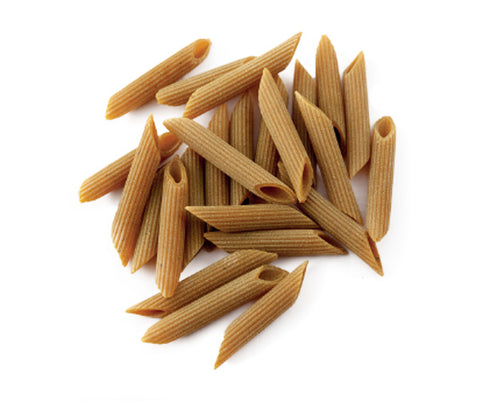Evaluating the talent of young footballers based on their somatotype
The importance of body composition in sports
Body composition involves the analysis of the human body based on the fractionation of total body mass.
In the field of sport, its evaluation is important because body composition is among the factors that can determine the athletic potential and the probability of success in a particular sport, in combination with technical/tactical, physical, functional and psychosocial factors.
In the case of soccer, body fat should be monitored, as appropriate fat levels allow players to move more effectively during training and matches.
Lean mass, especially muscle mass, should also be monitored, because inappropriate training loads (those that are too high or too low) can lead to unwanted changes in physique, which could affect performance factors such as speed, strength, power, and risk of injury.
Assessment of body composition by compartments
Different approaches can be used to assess and determine body composition.
Among them is the five-compartment fractionation method, which divides the human body into skin mass, fat mass, muscle mass, bone mass, and residual mass based on anthropometric measurements of body mass, skinfolds, body perimeters, and body diameters.
This anthropometric method of body composition fractionation has several advantages over other methods, which is why it is increasingly used in studies on the body composition of footballers.
These studies have been used to describe body composition by competitive division (first division, under 17 or U-17, under 20 or U-20, etc.) or by age or age group, but only some include body composition analyses by playing position (goalkeeper, striker, centre back, etc. ).
Playing position is important in this regard because differences in the physiological and metabolic demands of each position may suggest the presence of different anthropometric and body composition characteristics distinctive to the position , a fact that cannot be represented in general descriptions by competitive category or division.
The 13 categories of somatotype
Somatotype is defined as the quantification of the shape and composition of the human body, and is accepted as one of the indicators of the structure of the physical body.
Based on physical characteristics and body type, the subject is classified into endomorphism (relative fat with predominance of the abdomen over the chest, square shoulders and a short, fleshy neck), mesomorphism (musculoskeletal robustness with large bones, a large chest and a relative waistline). slender) and ectomorphism (straightness or slenderness with small bones, thin muscles, relatively long limbs, a short trunk and a flat abdominal region).
From the original 3 basic components, Carter derived 13 different categories of somatotypes .
Each category is named to reflect the relationship and dominance between the endomorphic, mesomorphic, and ectomorphic components, for example 343 is in the "central" category where no component differs by more than 1 unit from the other 2.

The ideal somatotype according to the needs of the sport
The ideal somatotype for an athlete differs depending on the demands of the sport and the different playing positions.
Several studies have shown that the most predominant somatotype component of footballers is the balanced mesomorph (2.5-5-2.5) with high muscularity (63%) and low percentage of fat (7-19%), while Casajús did not show significant seasonal variations in the somatotype of adult footballers in the Spanish First Division (2.6-4.9-2.3 vs 2.4-4.8-2.39).
Furthermore, Salokun demonstrated that body types that tended toward the ectomorphic appeared to be more susceptible to all types of common injuries than their more robust peers.
Differences between studies in different geographical areas
The study by Gil et al. investigated the relationship between the anthropometric and physiological characteristics of young soccer players (14-17 years) and their success or failure as soccer players.
Compared to their study, we found higher weight and BMI values at 14 years but lower at 15 and 16 years for both selected and non-selected soccer players.
In the study by Perroni et al., they found higher height and weight values than those reported by Mendez-Villanueva et al. in highly skilled young soccer players (aged 13–18 years) and by Gravina et al. in Spanish soccer players aged 10–14 years at the beginning and end of the season, but lower than those reported by Sporiš et al. in young Croatian soccer players (aged 14–15 years).
Analyzing the age from 10 to 13 years, the height, weight and BMI values of Perroni's results with young Italian soccer players were higher than those reported by Canhadas et al. on young Brazilian male athletes.
Compared to the results of Di Luigi et al. on Italian soccer players aged 10–16 years, we found higher height and weight values in all categories but lower BMIs in the categories over 14 years.
Furthermore, considering the playing position, the data of our study are in line with the study of Deprez et al. who showed a higher height value in goalkeepers (age categories U11 and U15) and significant differences in weight between the goalkeeper and all other positions.
When evaluating the parameter of the sitting height of the subjects, Perroni et al. find the same values for the pupils and juniors categories (91.85 and 91.80 cm, respectively) as those reported by Brocheire et al. on adult male international footballers (92.0 cm) belonging to the national “A” team of the Qatar Football Association.
Therefore, even though Students A and Juniors had the same height, Juniors had lower values than Students A (93 cm) in sitting height.
The results of Perroni et al. were superior to those of the study of Polat et al. and Figueiredo et al. on young Portuguese soccer players (11-12 years and 13-14 years). Polat et al., examining male children at the age of 16 years, found that the value of the sitting height of soccer was significantly higher than the sedentary one.
Height measured while sitting
Given that leg length and sitting height change differently during childhood and adolescence, and that standing height does not always correlate exactly with trunk height loss in children, several studies have shown that it is more important to monitor changes in sitting height than in standing height.
Since several studies have shown that puberty begins at approximately 78 cm of sitting height in boys and an increase in sitting height of 12-13 cm corresponds to puberty, we can assume that the Juvenile C category (78.7 cm) has begun the development process.
These findings were in contrast to Malina's study which stated that the growth spurt in boys occurs at about age 14, when the body composition of young people undergoes rapid changes.
The ideal somatotype to avoid traumatic injuries
Considering all subjects, we found some consistency with the somatotype value of 2.8-3.8-2.9 in line with previous studies that have demonstrated the prevalence of the mesomorph in the somatotype of adult and young soccer players .
Considering that soccer is characterized by running at different intensities (i.e., high and low) and jumping, turning, kicking, and dribbling, we agree with Rienzi et al. who stated that high degrees of muscle mass with low adiposity can avoid having to repeatedly lift excess weight during movement.
Possessing these advantages by a dominant mesomorph component allows the player to avoid traumatic injuries resulting from contact and explosive power movements, which characterize football more than other sports.
Identifying a potential talent from the somatotype
Knowledge of the somatotypical characteristics of the footballer could allow a better and faster identification of talents and design an effective physical fitness program.
A high percentage of muscle mass, with a low fat content, may allow the mesomorph to increase the volume and intensity of workloads during training.
Although not statistically significant, the results of the study by Lago-Penãs et al. showed that players on successful teams are leaner and more muscular than their unsuccessful counterparts.
The components of the somatotype change during adolescence
Nikolaidis and Karydis' study showed that the components of the somatotype also changed during adolescence.
In their study, endomorphy and ectomorphy decreased, while mesomorphy increased to reach the adult calcium somatotype (3-4.9-2.3).
Furthermore, no significant difference was observed between adolescent age groups with regard to endomorphism.
A recent study by Gil et al. in soccer players, aged 14 to 19 years, showed similar values in endomorphism and mesomorphism and a decrease with age only in the ectomorphic somatotype (U15: 2.5-4.2-3.4, U16: 2.3-4.3-3.1, U17: 2.6 -4.4-2.6, U18: 2.5-4.4-2.6, U19: 2.4-4.3-2.4). Perroni et al., found higher values of endomorphism and ectomorphism (2.5 vs 1.9 and 3.6 vs 3.2, respectively) and a lower value of the mesomorphic components (3.6 vs 4.4) compared to the study by Vivani et al.
In some categories there are significant differences
The results of Perroni et al. show that there are significant differences in the Giovanissimi subcategories and not in the Allievi subcategories.
Despite large maturity-related differences in the anthropometric (i.e., height and weight) and performance (i.e., strength, speed, and endurance) characteristics of children of the same chronological age, youth soccer competitions are organized into annual age groups based on age chronological age.
Individual differences in maturation status are associated with changes in physical fitness.
Particular attention must therefore be paid to the administration of training loads in the Giovanissimi subcategories where the range of variability between players of the same chronological age in growth changes is wide. In fact, to obtain early success.
Significant variations for the different playing position
According to previous studies, footballers were divided into 4 groups: forwards, midfielders, defenders and goalkeepers.
Although elite soccer players showed a balanced mesomorphic somatotype, significant variations were determined by the different playing position . Lago-Penãs et al. found that the anthropometric characteristics of young soccer players (range, 12–19 years) differed according to the playing position.
In particular, endomorphism values were higher in central defenders and goalkeepers than in external midfielders and attackers ; higher ectomorphism (2.4-4.0-2.9) and mesomorphism (2.9-4.1-2.6) values were found in attackers and goalkeepers, respectively.
Furthermore, their studies showed that there were no anthropometric and somatotype differences between football teams of different club rankings.
Instead, the study by Gil et al. concluded that there are anthropometric and physiological differences between young non-elite Spanish footballers playing in different positions.
In their study, they found forwards with the lowest endomorphic and highest mesomorphic values compared to the rest of the player position groups. The results of Perroni et al. showed a central component (3-4-3) in defenders, midfielders and forwards and mesomorphic-endomorphic component in goalkeepers (4-4-2).
In this study, we found that goalkeepers had higher values for endomorphy (4.3) and mesomorphy (4.2) but lower values for ectomorphy (2.0) than the other players' positions.
Compared to the other components, a high frequency of central components, balanced ectomorphs and ectomorph-mesomorphs was found in "defenders" ( n = 10 subjects), midfielders ( n = 9 subjects) and "forwards" ( n = 7 subjects), respectively.
Football playing positions require specific requirements and tasks.
In this study, different somatotype characteristics were found among goalkeepers and other player positions from the initial subcategories.
Goalkeepers perform more defensive tasks (e.g. vertical jumps, tackling, long kicks and passes) than other playing positions that require specific skills (e.g. repetitive vertical and lateral jumps and dives).
For this reason, they should be trained with a more appropriate and specific training load than other soccer players.
Preventing injuries by evaluating the somatotype in young footballers
Salokun studied the influence of body type on injury rates among Nigerian footballers and showed that the incidence of injuries varied considerably between body types.
They found that 45% of meso-ectomorphs and 44% of mesomorphs suffered injuries, while 85% of ectomorphs and 50% of ecto-mesomorphs were injured.
Conclusions
The differences found in these analyzed studies suggest a marked specialization between goalkeepers and attackers, establishing significant differences between them.
This data collection could be used to pre-establish the role with the greatest chance of success in football.
However, further studies are needed to evaluate the influence of the development of individual maturation with respect to sports training on the conformation of a specific anthropometric profile of a footballer and its relationship with the different playing positions occupied on the field during the match.
Sources:
- J Strength Cond Res. 2015 Aug;29(8):2097-104. doi: 10.1519/JSC.0000000000000881.
- J Strength Cond Res. 2019 Jul;33(7):1904-1911. doi: 10.1519/JSC.0000000000002125.



